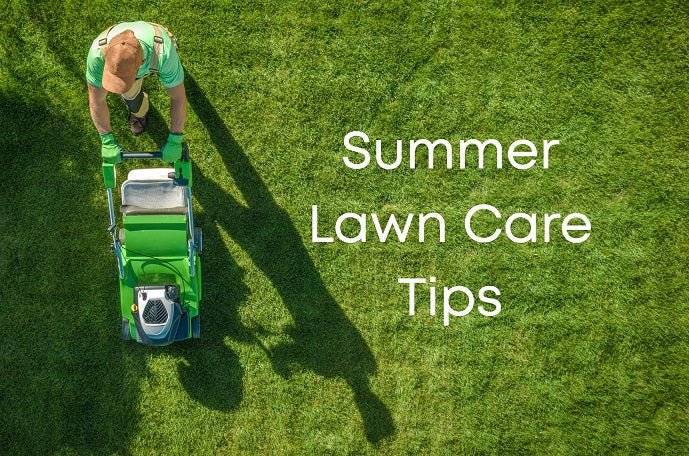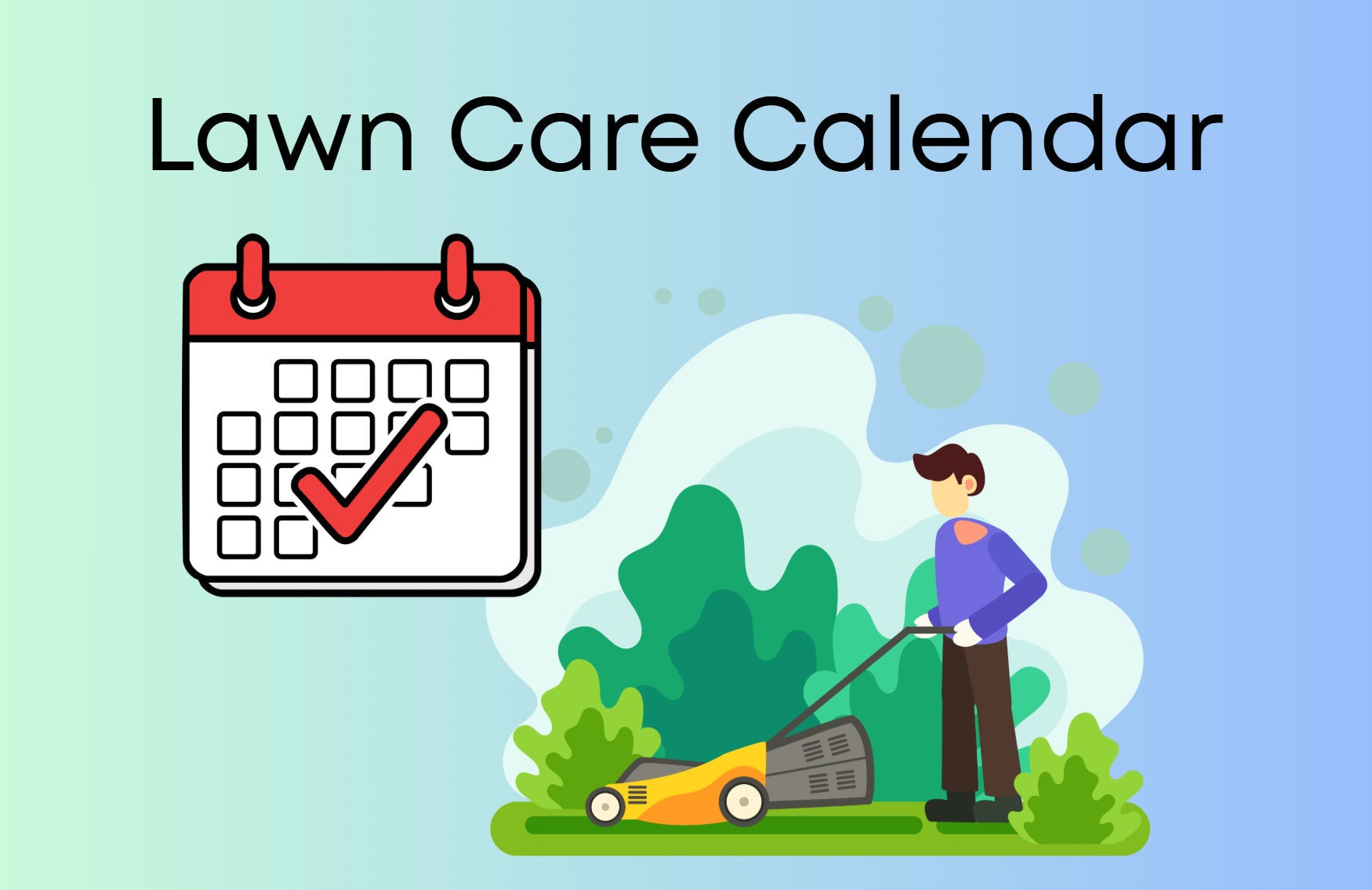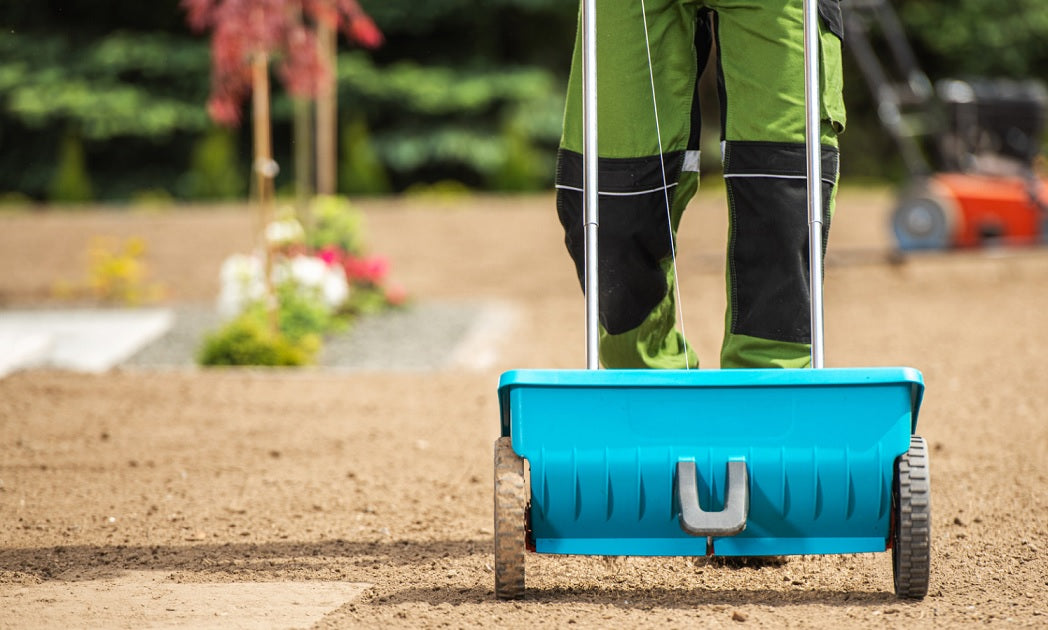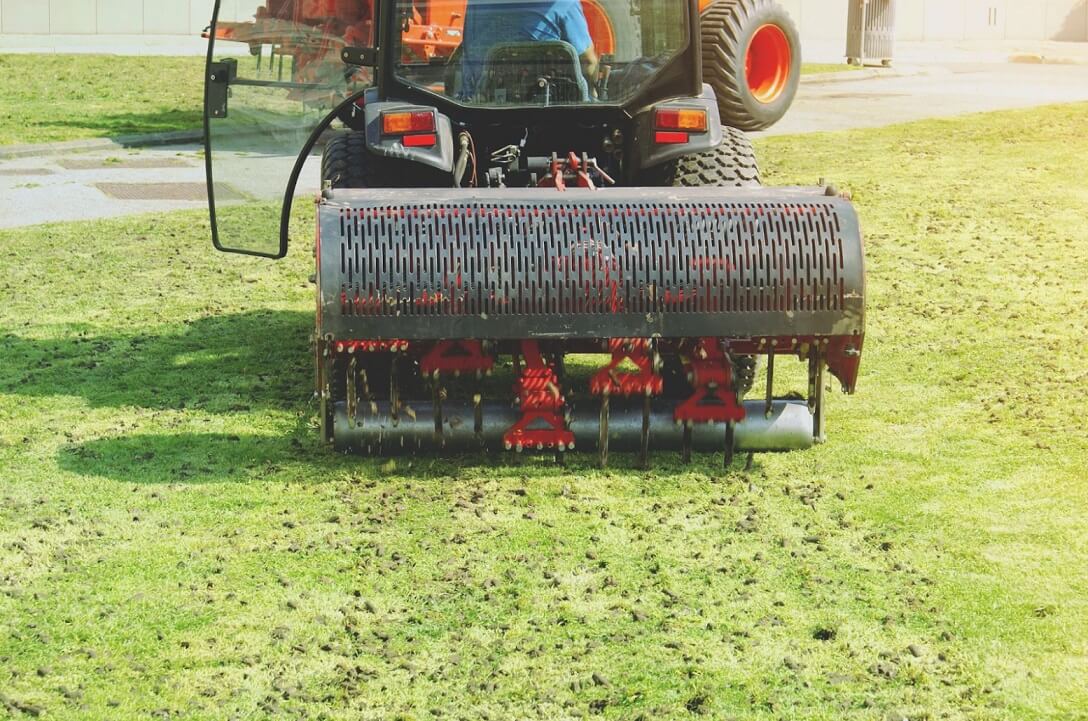Like humans, your lawn also needs to breathe. The roots under the soil take Oxygen and emit CO2, and this air exchange is essential for a healthy lawn.
When your lawn does not breathe properly, it suffocates over time. And the result is brown grass, patches, nutrient deficiency, and other issues.
Lawn aeration is a technique that improves your lawn's breathing. It helps lawn owners solve issues with the soil and ensure better growth and health of the grass.
This is a comprehensive guide on Lawn Aeration. Whether you are a beginner lawn owner, hobby gardener, part-time lawn care worker, or an expert, this Lawn Aeration 101 will equip you with the basics to advanced lawn aeration knowledge and techniques. We will cover the details and answer your questions and queries.
What is Lawn Aeration?
The word “Aeration” means introducing air into a material. When we discuss it with respect to lawns, it means improving the air exchange in the soil.
Lawn Aeration is an effective technique to improve breathability. It involves creating small holes or removing a tiny part of the lawn, like a plug.
When these perforations are created, they serve as a direct path to the roots. Whether it is air, water, or nutrients, the grass roots get access to everything. It allows roots to be stronger and go deeper.

Why is Lawn Aeration Essential for a Healthy Lawn?
When you establish a new lawn with fresh soil, the particles of the soil have gaps in between. They are apart from each other.
Over time, the soil compacts. The particles come together and leave no space for air exchange, water, and nutrients.

It’s a natural process, and it happens because of the footfall, use of lawn equipment, rain, etc. Because of pressure or water penetration, the soil becomes compact.
When it reaches a severe level, it does not allow air to go in and out. It prevents water from getting into it. And the roots become deprived of essential nutrients.

It stops the growth of the roots and grass. And because of a lack of nutrients, the grass changes its color. As time passes, you witness patches in your lawn. And if it is not aerated at the right time, it dies, and then you have to start over.
Because of lawn aeration, the adverse effects can be reversed. It creates paths or holes that allow air, water, and nutrients to go into the soil and reach roots. The grass recovers over time.
It’s recommended to aerate your lawn to ensure its health. You don’t need to wait for the patches to become visible or anything worse to happen. It's better to aerate a lawn before it's too late.
When You Should Aerate Your Lawn
Lawn aeration isn’t something you need to do once a week or a month. It’s hardly done once or twice a year, and it’s more than enough.
However, you must choose the right time to aerate your lawn. It allows the lawn to recover easily and be ready for the next season.
Otherwise, lawn aeration at the wrong time can harm your lawn. Aeration puts stress on the grass roots. If done at the wrong time, roots will not be able to recover, and there is a high risk of weeds. It could also go under heat stress in extreme temperatures.
Generally, the best time to aerate is the peak growing season of the grass. It allows it to quickly recover. The fertilizer used after aeration is properly utilized, and better growth is witnessed.
If your lawn has cool-season grasses like Fescues and Kentucky Bluegrass, you can do aeration in late summer to early fall (August-October) or early spring (March-April).
In the case of warm-season grasses, such as Bermuda and Zoysia, the best time is late spring to early summer, May-July.
When You Shouldn’t Aerate Lawns?
Lawn aeration isn’t for every lawn. You can enjoy its benefits only if you do it right. Otherwise, it will have adverse effects on your lawn.
Think before you aerate a sodden lawn. It’s a special lawn made with a layer of pre-grown grass (sod). It’s better to wait 12-15 months before you aerate it. Otherwise, you will end up damaging the sod sheets.

If you have recently seeded the lawn, do not aerate it until you have mowed the grass at least four times. You can also wait for the next aerating season, depending on your grass type.
Never aerate dormant lawns. If you aerate them, the grass won’t be able to recover. It is more likely that weeds will grow easily and take over the lawn.
In the case of any fungal disease on your lawn, treat the disease first and let the grass recover. Once the grass is healthy, you can aerate it. Otherwise, aeration will promote the infection and allow it to spread throughout the lawn.
It is necessary to moisturize your lawn before aeration. But if there is too much water, such as in the case of waterlogging, you should avoid it. Muddy soil will have no effect of aeration, and it will compact further.
If your lawn has creeping or runner-heavy grasses, such as St. Augustine or Centipede, think before you aerate. Their roots or surface might get damaged due to aeration. They might not be able to recover.
Types of Aerators Used for Lawn Aeration
Core Aerators
Core Aerators are also called Plug Aerators. Because they remove small plugs or cylinders from your lawn.
It means they create a small cylindrical hole in the soil that promotes aeration. It allows the soil to reverse compaction and soak up more water and nutrients. They are also ideal for overseeding.
Core aerators are recommended as they are extremely effective. But you should never use them more than once a year. They are suitable for an annual aeration. Secondly, they leave the plugs behind, and you need to dispose of them.
You can get both manual and motorized core aerators. For annual aeration, you can rent an aerator.

Spike Aerators
Spike aerators have spikes that create holes in the ground. But they are different from core aerators as they push the soil sideways to create the hole. They do not remove anything from the soil.
They are suitable for temporary aeration. The reason is that they do not remove any soil. Which means if the soil was compact before spike aeration, it will get a little bit worse as the soil around the spike hole will get more compact.
It does not give any relief to the soil. However, it can improve water and nutrient penetration a little bit. You can do it for temporary surface issues.

Liquid Aerator
This is a chemical aerator that uses special compounds that mix with the soil of your lawn and break down the thatch and reduce compaction to some extent.
The ingredients in the soil break down the bonds between clay and other particles. They create microscopic holes in the soil to make it fluffy and improve aeration.
It loosens the soil and allows water and nutrients to go deeper. It can promote root health; however, it’s less effective compared to core aerators.
All you need is a sprayer, and you can spray the special solution on the soil in no time. It’s effortless. However, the enzyme needs time to work, which could be months.
You can use liquid aerators for lightly compacted soil or quick maintenance.
How to Aerate Your Lawn—Step-by-Step Guide
For maximum benefits, follow the right steps to aerate your lawn. Here’s what you need to do.
Mow the Lawn
The first thing you need to do is mow the lawn. It is an important step to remove excess growth for better aeration. It allows the aerator tines to penetrate the soil easily.
You need to cut the grass about half of its normal height. Do it 1-2 days before you plan to aerate the lawn. You can check the best time to cut grass according to the season, time, and other factors.
For ease, you can use a robot lawn mower. Navimow offers a wide range of robot lawn mowers for different sizes of lawns.
Let’s say you have the Navimow i110 robotic lawn mower. Once you turn it on, it mows your grass automatically. You can set the desired height and let the mower do its job.

It understands your lawn area because of AI-assist mapping. Not only that, but it can avoid obstacles and pets. It also does perfect lawn edging to make your lawn more aesthetically pleasing. You can schedule lawn mowing, and the mower will do its job at the right time. You can check the live mower status through the app and get real-time updates.
Further reading: Lawn Mowing Tips
Water the Soil
Before aeration, watering is important. If you try to aerate a dry lawn, it will be very difficult and can also harm the equipment.
Lightly water the soil a day before aeration. Make sure to use water within the limit. The soil should be moist. It shouldn’t be soggy or muddy.
Mark Obstacles
People often break sprinklers, valves, and other items in their lawn while using an aerator. It’s better to mark all obstacles around.
If there are any utility lines underground, you should also mark them, as the aerator tines can damage them.
Run an Aerator
Finally, you are ready to aerate the lawn. You can rent a core aerator for some time according to the size of the lawn.
Start the aerator and aerate the lawn. Move it just like you use a lawnmower. Go with a consistent speed and do not over-aerate any area.
If there is any area that receives high foot traffic, you can do a second pass there. It will give more relief to the soil.
Core aerators remove plugs from the soil. You’ll see plugs everywhere after aeration. You can leave them on the lawn and let them break down.
They will dry automatically and disintegrate after 1-2 weeks. The benefit of leaving plugs on the soil is that they contain microbes and organic matter that are beneficial for the soil.

Things to Do After Aeration
Once you are done with lawn aeration, you need to do a few things to enjoy maximum results and maintain a healthy lawn.
Overseeding
The best time for overseeding is after aeration. Because of the holes, seeds go inside the soil easily. Plus, they have better contact with air, water, and nutrients.
Spread the grass seeds over the lawn. When they go inside the holes, they get the perfect seed-to-soil contact. It increases the germination process, and you see new grass in minimal time.
You don’t need to wait. You can do overseeding just after aeration.
Fertilization
To provide the essential nutrients to grass, use a high-quality fertilizer. After aeration, the effect of the fertilizer is maximized. Nutrients easily reach the roots and improve their health.
It will provide all the nutrients your old and new grass needs to grow and stay healthy. After overseeding, you can apply a starter fertilizer.
Watering
Water is important after aeration. Your grass needs to recover from the aftereffects of aeration and grow healthier.
You should water your lawn lightly. Do not overdo it. Instead, water 1-2 times a day. It is better for seed generation as the holes are in direct contact with the air and sunlight, so they dry out quickly.
You need to ensure the seeds are moist, not drowned in water.
Mowing
Mowing is important to maintain the lawn's aesthetics and allow better growth after aeration.
You can mow every 2-4 weeks after aeration and mow the grass at 2 inches. The best way is to schedule your Navimow robot lawn mower, and it will keep your grass maintained without any hassle.
For effective maintenance, check out how often to mow your lawn.
FAQs
What is aeration of a lawn?
Aeration of a lawn means creating holes in the soil to give it relief from compaction. It loosens the soil and gives roots better access to air, water, and nutrients. It makes your lawn greener and healthier.
When should you aerate your lawn?
You should aerate your lawn in the peak growing season of the grass. It is the best time because it allows the grass to overcome stress and recover faster. For cool-season grasses, late summer to early fall (August-October) or early spring (March-April) is better. And warm-season grasses should be aerated in the late spring to early summer, May-July.
Are lawn aerators worth it?
Yes, lawn aerators are totally worth it. Over time, the soil compacts and does not allow air, water, and nutrients to reach roots. For a healthier lawn, you need a lawn aerator. However, you don’t need to buy a machine as you only need to do it once a year. Renting is a better option.
How long after aeration can I mow?
After aeration, you can mow after 2-4 weeks. Do not do it earlier, as it can reduce aeration benefits.
What is the best method for aerating lawns?
The best method for aerating lawns is using a core aerator. It is the most effective technique and ensures better results even if there is severe soil compaction.
More Blog
When is the Best Time to Plant Grass Seed?
Every lawn owner is eager to get rid of those bald patches and make the lawn lush and green from every corner. But you can’t just grab grass seeds and plant them whenever you want. Beginners often don’t know the...
Summer Lawn Care Tips: Smarter Lawn Care for a Better Season
Summer's finally here. A time when the days are long, the sun is high, and the sweet smell of freshly cut grass hangs languidly in the air. For many of us, a lush, green lawn is the centerpiece of summer,...
Month-by-Month Lawn Care Calendar for the US
Lawns are sensitive, so you have to do everything at the right time, whether mowing, applying fertilizer, or watering. Otherwise, you will end up ruining your lawn while trying to make it healthier. Beginner gardeners and new lawn owners often...
How to Overseed a Lawn in Spring?
Does your lawn look thin and patchy? Many people would have suggested overseeding it in spring. But you’re still confused about how to complete that process. It’s not just sprinkling some seed on the soil and hoping water will do...
When To Fertilize Your Lawn In Spring
The first time you fertilize your lawn in spring can set up healthy, lush growth for the entire year. However, getting the time right is essential to ensure excellent results. You might be wondering how to figure out the perfect...
Should You Aerate Your Lawn in Spring
Planning to aerate your lawn this season, but unsure because of the mixed views on spring aeration? Many homeowners face the same confusion. Some say spring works fine, while others warn against it, which makes the decision harder than it...






Share: